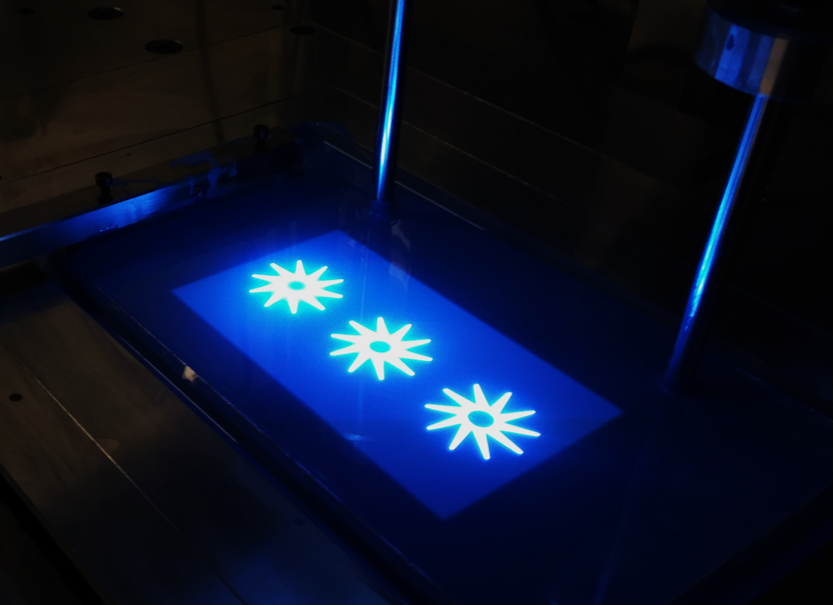Author: Dr. Joana Gonçalves Fernandes
Advisors: Dr. Elena Xuriguera
Programme: Nanocience
Research line: Additive Manufacturing
Thesis defense date: June 20, 2019

Abstract
This dissertation aims to develop ceramic materials for Mask-Image- Projection-based Stereolithography (MIP-SLA) technology focused on electronic applications. A low-temperature co-fired ceramic (LTCC) material was selected to accomplish this aim, mainly used for radio frequency applications. Moreover, the proof of concept of AM technology hybridization and multi-materials printing is also demonstrated, opening the door to new researchers in the field of 3D-2D printing electronic devices from both material and technology perspectives. The different steps of the whole process were successfully achieved to achieve the main goal, i.e., formulation of an LTCC photocurable suspension, its printability by MIP-SLA technology, and the post-thermal treatment of debinding and sintering. The photocurable LTCC suspension consists of ceramic particles dispersed in a suitable photocurable resin, which must polymerize in the visible light range, trapping the ceramic particles. The challenge of developing and optimising an LTCC photocurable suspension for MIP-SLA with the appropriate rheological and photocurable behaviour is accomplished in this work. The printed piece contains the polymeric part, which must be removed (debinding) and then sintered for the densification of the final ceramic piece. This is the most difficult and time-consuming step of the whole process. The so-called debinding is one of the most challenging steps of the SLA-based technology of ceramic materials. In this sense, a detailed study of the debinding process is carried out for a deeper understanding of the degradation of the resin during thermal debinding. For this to happen, the optimization of the temperature rate and used atmosphere during the thermal treatment is also presented in this work. In fact, the analysis and understanding of thermal treatment parameters and their repercussion on the final results is the key to successfully achieving the main goal: obtaining final ceramic pieces without defects. The limits of the MIP-SLA printing process are presented, analyzing the resolution, fidelity of pattern transfer, and accuracy of the printing process using the optimized LTCC suspension. The involved phenomena during the photopolymerization, such as light scattering, non-uniformities of the light projection along the building platform and shrinkage during the polymerization, are analyzed and optimized for a fruitful printing process. The greatest achievement of this work is the possibility of printing complex geometry with high resolution with an LTCC material, which has never been demonstrated before in the field of additive manufacturing. This is the beginning of new breakthroughs in multi-material printing for electronic applications.
Publications:
- Study of mixing process of low temperature co-fired ceramics photocurable suspension for digital light processing stereolithography
Funding:
Doctoral grant Doctorats Industrials (DI-2014) (Generalitat de Catalunya).


